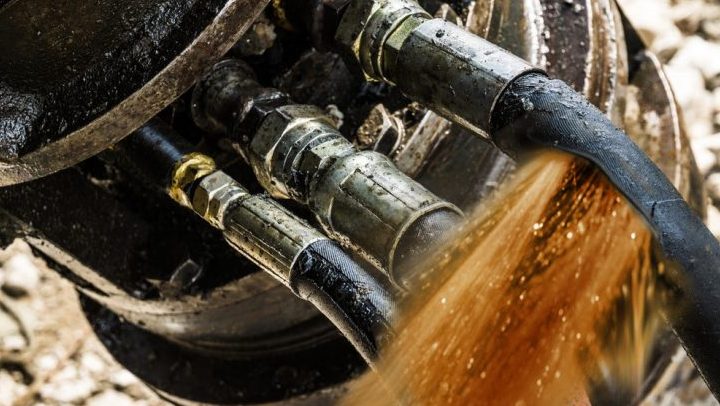 Pressurized fluid is moved between various parts of the hydraulic equipment via hydraulic hoses. A hydraulic hose that is used for this must be powerful enough to handle the extreme pressure & heat.
Pressurized fluid is moved between various parts of the hydraulic equipment via hydraulic hoses. A hydraulic hose that is used for this must be powerful enough to handle the extreme pressure & heat.
All sorts of equipment will work flawlessly with the adaptable hose design, which also helps to make the design smaller and simpler overall. The two primary causes of hose failure are improper installation or choosing of the tubes and an absence of upkeep.
Our recommendation is to change the tube when it has been damaged, depending on how severe the injury is. Otherwise, leaks and other security risks may occur. This article discusses when to change your hydraulic hose as well as the process of doing it.
Hydraulic hoses typically endure for 1 to 2 years at the very least and 10 years at the most. The chosen hose quality, kind of operation and other factors will all affect the hose’s lifespan. If your tube breaks down sooner than 2 years, this may not necessarily be a problem with your line; there might be several other external elements at play as a consequence of the breakdown or inefficiency of other parts.
Another major issue is vibration, which may cause surface wear, scratches, or cuts when the edge of the tube comes into direct contact with some other parts that are heated to the touch. Poor hose assemblies, problems with chemical resistance, increasing operating pressure, improper hose size choice, and environmental conditions linked to the application are other causes of hose breakdown.
Reparation Of The Hydraulic Hose.
Why should a hydraulic cable be changed is the query. Indeed, it occurs whenever the pipe is damaged, which can be seen visually inspected to determine. Your tube is safe to use if it shows no indications of leaking, abrasions, splits, or twisting. This is suggested to carry out planned checks at least monthly to avoid future hose failure-related problems. The following elements need to be examined:
- Hoses that are twisted will lose structural integrity and leak.
- Fittings that are corroded or damaged have to be changed right away.
- Any harm on the hose’s outside cover.
- Excessive pressure over a crimped or squashed hose will have a detrimental impact on the hose’s integrity.
- Abrasion causes the wire inside the hose to become exposed.
- Hose cover that is stiffened or blistered.
- Both oil flowing down the course of the pipe and oil leaking from the hose connections.
How Is Hydraulic Hose Change Done?
When a hydraulic tube is determined to be broken, it must be changed. By cutting off the machine’s power source, it is necessary to examine the pipe and assess its status before changing it. The various steps of replacing a hydraulic tube are as follows:
- Unplugging the power source and inspecting the parts that require to be taken out or changed to make sure they won’t impede the replacement procedure will set up the hydraulic mechanism.
- Remove the damaged hose and throw away the fittings.
- Using a suitable fitting plug or cloth, seal the connections.
- Connect the hose using the correct procedures.
- Visually inspect the connections initially, and then perform testing whether they are clear of errors.
Tips to improve hose’s life
Let’s go on to the subject at hand, namely, advice for lengthening hose serviceability. Here is a summary of them.
- Before choosing the proper hose, consider system variables including heat, stress, and flow needs.
- Consider the compatibility of hydraulic fluids.
- Start installing the biggest ID lines first to avoid damaging the hoses by bending them.
- Determine the necessary hose length.
- Always be mindful of the pipe bend diameter and ensure that it is not lowered.
- Create a straightforward path with few abrasion sites.
- Use cable ties, helical metal, metal fixings, nylon coverings, or other attachments to protect hoses from damage.
Final thoughts
Hydraulics depends heavily just on the hydraulic tube components. This adaptable product joins several parts together and circulates pressurized fluid throughout the network. No hydraulic mechanism can function without a hose, which is an unnecessary component. Similar to the previous part, this one has to be maintained and cared for meticulously. Regrettably, this is the area we pay the least attention to. Contact experts such as Everett Hydraulic Hose to get the best hydraulic hose service.




